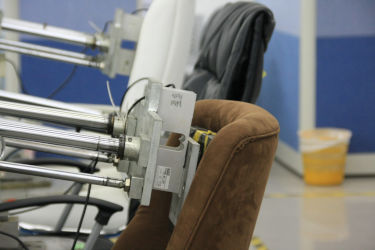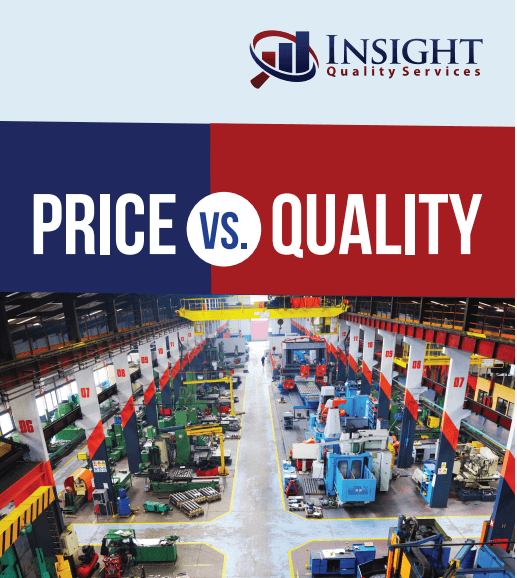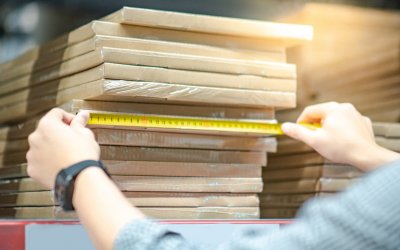Are you working with furniture manufacturers in low-cost countries like China, India, or Vietnam?
Imagine that you place an order for 2,375 wooden tables and the shipment arrives at your warehouse. This table is a hot item and you’re excited to get more pieces into the hands of consumers. But as the days go on and you sell more tables, you notice a disturbing pattern.

Quality control is important for furniture items
One after another, the complaints come rolling in, and you read them all in your online dashboard.
“The legs are uneven and the table is wobbly.”
“The top of the table isn’t smooth enough.”
“I just bought this a week ago and the paint is already peeling off.”
Your tables are getting returned at a faster rate than they’re being sold and you’re unsure of how you ended up in this position.
When importing furniture products, you need to be sure that your manufacturer is shipping well-made pieces and meeting your quality requirements.
How can you reduce the risk of a nightmare scenario like the one above?
You need an effective quality management plan.
What Should be in a Quality Management Plan for Furniture?
A quality management plan helps you get the best possible results from your manufacturer and it requires two things:
- You need to provide clear specifications to your factory, that fully outline your quality requirements.
- You need to conduct quality inspections and lab tests at specific, predetermined intervals.
Clear specifications tell the factory exactly how many centimeters or millimeters the top of your table should measure and how smooth it should be. They list the expected length of each table leg and specify exactly what type of paint should be applied.
With your specifications outlined, you can then conduct inspections and lab tests to hold them accountable to your standards.
What kind of inspections do you need to conduct?
Conducting Furniture Quality Inspections at the Factory
One of the most important things you can do to ensure the quality of your furniture is to hire a company to conduct third-party inspections.
You hire a neutral third-party, like Insight, to send an experienced quality inspector to the factory either before, during, or after production.

Quality control professional filling out an inspection report form
The most common type of inspection is the pre-shipment inspection—also called a final random inspection. It is conducted once 100% of your furniture pieces have been produced and they are at least 80% packaged. The inspector uses an inspection checklist, which is divided into different sections such as:
- Package Requirements,
- Label and Manual Inspection,
- Product Visual Inspection,
- Functional Tests,
- Physical Requirements,
- And others.
During the inspection, they might check for splinters and sharp edges, verify that the piece has the appropriate texture and glossiness, look for stripped screws, and more. The specific items on your checklist depend on your product specifications and are the result of a collaborative effort between you and your inspection company.
Once your furniture inspection is completed, you receive a report with the inspector’s findings and you can approve or reject the shipment before it’s sent to you.
Aside from inspections, you should also plan on conducting lab tests.
Laboratory Tests for Furniture Products
Lab tests are important because they help ensure that your furniture items are in line with any performance, safety, flammability or environmental standards that apply to them.

Loads, force, and velocity can be applied to a chair to simulate normal use
Performance tests can help to simulate the stress of actual use, for example, by using specialized equipment to put weight on the chair.
Flammability tests ensure that the piece does not ignite and pose a danger to consumers in their homes or offices.
In some cases, there are specific requirements that you need to meet in the country you are importing to.
Lab tests can help to ensure that you meet these and any other standards that are important to your brand.
As such, they should generally be included in your quality management plan.
Specify, Inspect, and Test to Ensure Product Quality
By developing a thorough quality management plan you can have more success as a furniture importer.
Write clear specifications, then conduct third-party inspections and lab tests.
Doing so helps you to strike the right balance between the price of your products and their quality, which is a challenge for any brand.
To learn more about how to do this, we recommend you download the following white paper.
Price vs. Quality: What You Need to Know
When you’re making products to sell in the marketplace, you have to consider the tradeoffs between price and quality. Sometimes, producing better quality products can lead to paying a higher price for manufacturing.
Download our free white paper, Price vs. Quality, to learn how to produce great quality while keeping your costs low.
What are Your Thoughts?
Do you have any questions about the content of this article? Is there something you would like to add?
Let us know in the comment section below. ⤵️





0 Comments